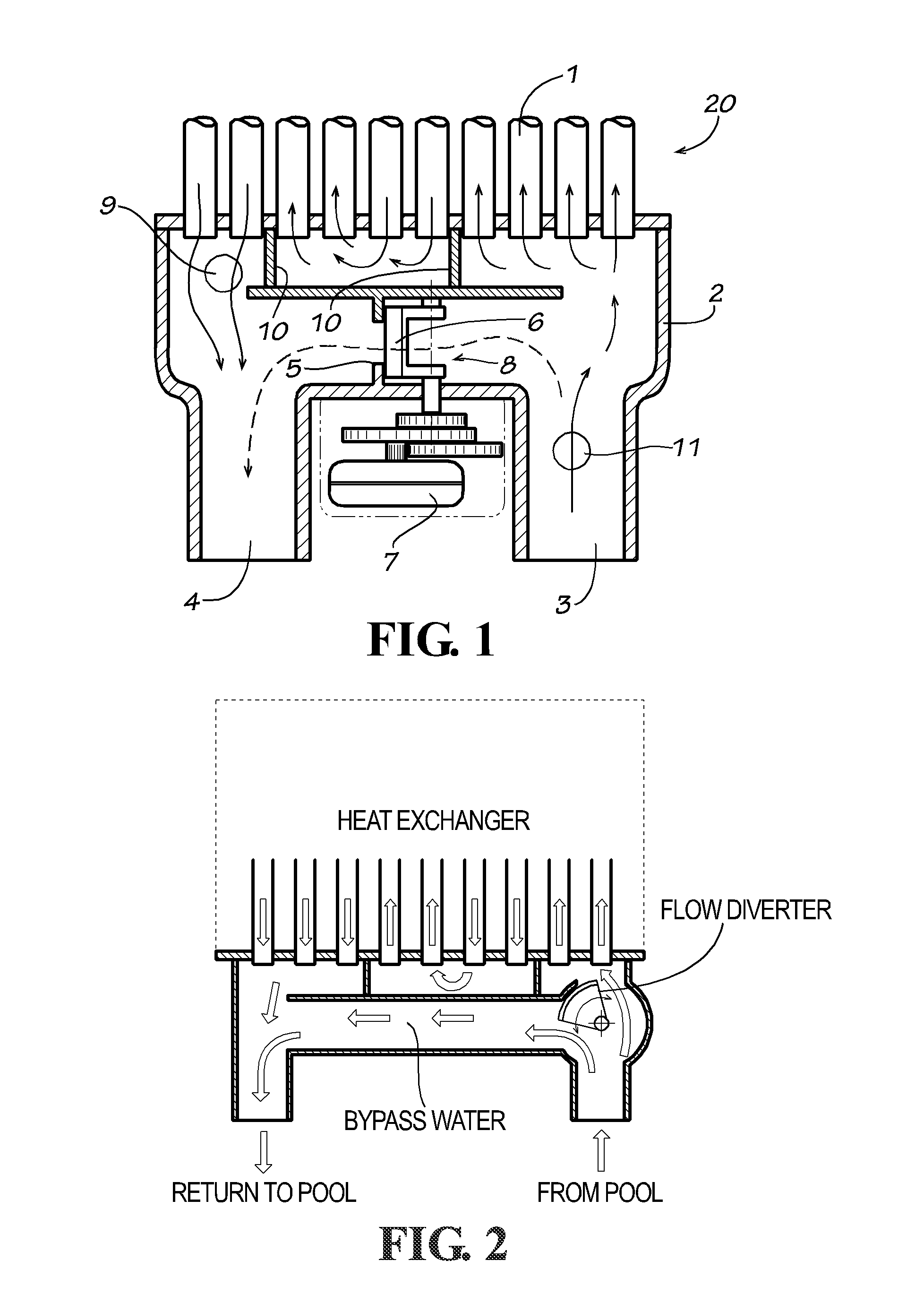Flow control and improved heat rise control device for water heaters
a technology for water heaters and flow control, which is applied in the field of water heaters, can solve the problems of reducing heating efficiency, unable to absorb heat, and prone to erosion, and reducing the efficiency of heat exchangers
- Summary
- Abstract
- Description
- Claims
- Application Information
AI Technical Summary
Benefits of technology
Problems solved by technology
Method used
Image
Examples
Embodiment Construction
[0022]Embodiments of the invention provide a means to control the flow of water to a heater and the resulting water temperature rise to allow a heater to operate under greatly varying flow and inlet water temperature conditions. Specifically, embodiments of the invention utilize a valve mechanism, such as a diverter or other suitable device, that controls the amount of water passing through the heater tubes or coils of the heat exchanger and the amount of water that by-passes the heater without passing through the heater tubes or coils of the heat exchanger. Controlling the amount of water passing through the heater tubes or coils may be accomplished by controlling the water flow through the by-pass area, by controlling the opening entering the heater tubes or coils, or a combination of both. FIG. 1 illustrates the control of water flow through the by-pass area alone by way of diverter 6. FIG. 2 illustrates a similar design that affords even more control, as the diverter is position...
PUM
 Login to View More
Login to View More Abstract
Description
Claims
Application Information
 Login to View More
Login to View More - R&D
- Intellectual Property
- Life Sciences
- Materials
- Tech Scout
- Unparalleled Data Quality
- Higher Quality Content
- 60% Fewer Hallucinations
Browse by: Latest US Patents, China's latest patents, Technical Efficacy Thesaurus, Application Domain, Technology Topic, Popular Technical Reports.
© 2025 PatSnap. All rights reserved.Legal|Privacy policy|Modern Slavery Act Transparency Statement|Sitemap|About US| Contact US: help@patsnap.com


